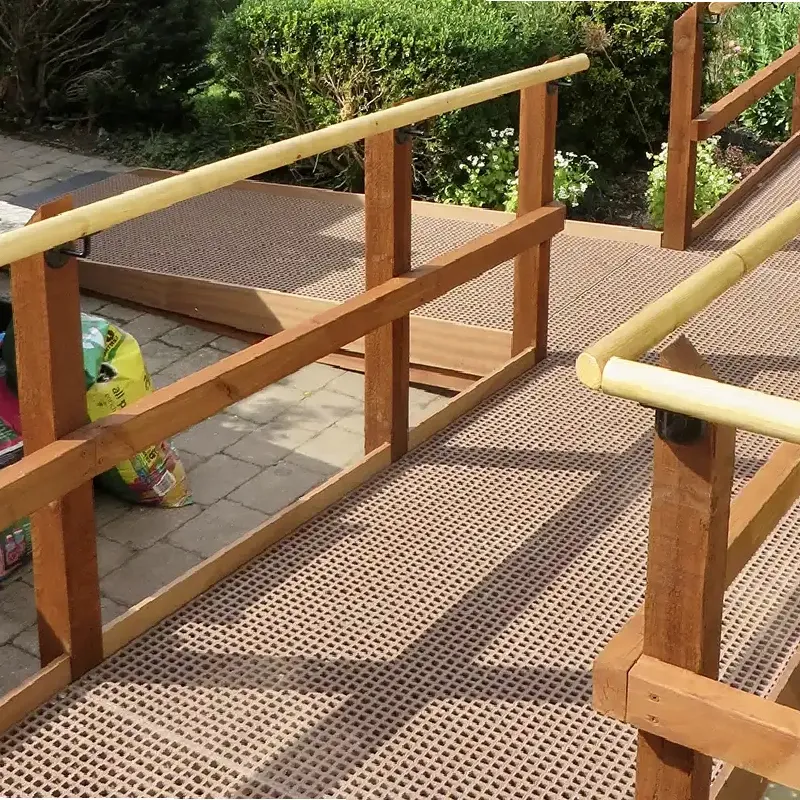loading...
- No. 9, Xingyuan South Street, Dongwaihuan Road, Zaoqiang County, Hengshui, Hebei, China
- admin@zjcomposites.com
- +86 15097380338
- Welcome to visit our website!
cutting frp grating
Understanding the Cutting of FRP Grating Techniques and Considerations
Fiberglass Reinforced Plastic (FRP) grating is increasingly popular in various industries due to its remarkable strength-to-weight ratio, corrosion resistance, and durability. This type of material is made of reinforced plastic resins and a network of fiberglass, making it ideal for environments where traditional materials like metal or wood would degrade quickly. An essential aspect of working with FRP grating is the cutting process, which requires specific techniques and considerations to ensure high-quality results while maintaining safety.
The Importance of Proper Cutting Techniques
Cutting FRP grating efficiently is crucial for a variety of applications, including walkways, platforms, and safety covers. The inherent properties of FRP mean that improper cutting can lead to weak points, splintering, or even damage to the material that could compromise its integrity. Therefore, choosing appropriate cutting methods is key to preserving the grating's physical properties while achieving the desired dimensions.
Tools for Cutting FRP Grating
A range of tools can be utilized for cutting FRP grating, each with its advantages and disadvantages. The most common methods include
1. Circular Saws These power tools are excellent for cutting FRP grating quickly and efficiently. Using a fine-toothed carbide blade can yield clean cuts, minimizing fraying along the edges. It's essential to manage the speed of the saw to prevent overheating, which can cause resin to melt and distort the cut.
2. Jigsaws Jigsaws equipped with appropriate blades can effectively cut curves or intricate shapes in FRP grating. They are beneficial for applications requiring detailed work, though care must be taken to maintain a slow and steady pace to avoid excessive friction.
3. Band Saws For larger sheets or thicker grating, band saws can be an excellent option. They provide a straight cut with a minimal kerf, conserving material and reducing waste.
4. Hand Tools For small sections or minor adjustments, hand tools like hacksaws may be used. They require more effort and time but can be ideal for precision tasks or when power tools are not available.
cutting frp grating

Safety Considerations
Cutting FRP grating does involve potential hazards, and precautions must be taken to ensure safety during the process
- Personal Protective Equipment (PPE) Operators should wear appropriate PPE, including goggles to protect against flying debris, gloves, and respiratory protection to avoid inhaling fiberglass particles.
- Work Area Ensure that the work area is well-ventilated and free from hazards. Proper lighting is also essential to give clear visibility of cutting lines and any potential points of danger.
- Material Stabilization Prior to cutting, securing the FRP grating to a stable surface minimizes movement, reducing the risk of accidents and ensuring more accurate cuts.
Post-Cutting Finishing Touches
Once cutting is complete, it’s important to smooth out the edges of the FRP grating to remove any rough spots or sharp edges that might pose safety risks. This can be done using sanding blocks or power sanders. Additionally, inspecting the cut edges helps to identify any potential weaknesses that may need reinforcement before installation.
Conclusion
Mastering the cutting of FRP grating is an invaluable skill in various sectors, including construction, marine, and industrial applications. The selection of appropriate tools, adherence to safety practices, and post-cutting finishing will directly impact the effectiveness and longevity of the grating. With the proper techniques, FRP grating can serve its purpose effectively while maintaining the safety and satisfaction of those who utilize it. As the use of FRP materials continues to rise, understanding the nuances of cutting and handling these composites will remain crucial for industry professionals.
-
The Rise of FRP Profiles: Strong, Lightweight, and Built to LastNewsJul.14,2025
-
SMC Panel Tanks: A Modern Water Storage Solution for All EnvironmentsNewsJul.14,2025
-
GRP Grating: A Modern Solution for Safe and Durable Access SystemsNewsJul.14,2025
-
Galvanized Steel Water Tanks: Durable, Reliable, and Ready for UseNewsJul.14,2025
-
FRP Mini Mesh Grating: The Safer, Smarter Flooring SolutionNewsJul.14,2025
-
Exploring FRP Vessels: Durable Solutions for Modern Fluid HandlingNewsJul.14,2025
-
GRP Structures: The Future of Lightweight, High-Performance EngineeringNewsJun.20,2025
